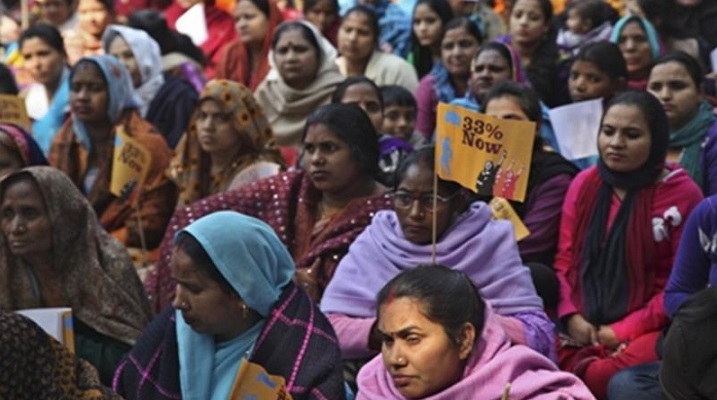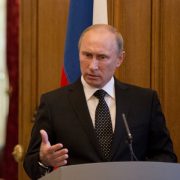
Russia’s failure in its invasion of Ukraine has weakened Moscow’s old ties with India, for decades a bedrock of Indian foreign relations, and brought to the fore the most complicated geopolitical puzzle of the “new Cold War” — between India, China, and the United States. New Delhi is shifting its position between the other two, which is not yet settled and could move global politics in many directions.
It is a massive change from the past Cold War, when India was politically and economically marginal in the great power competition, as Shivshankar Menon remarked.[1]
India presently has a specific role vis-à-vis China with the United States — to be China’s counterweight in the region and thus globally. But if China were to revert to good ties with the US and the United States accepted the reversal, India would be squeezed out and could lose its present strategic advantage. Therefore, India might want to push ahead with the US fast to make China’s possible flip difficult.
Also, if Indian leaders look for some kind of new ties with China, they could be left between two chairs, not with America and not with China. In fact, Beijing has been impervious to concessions that Delhi believes are necessary to redress an uneven relationship, according to Indian pundits.
India-shoring?
The rise of tensions between China and the United States, the announced technological decoupling, and the new “friend-shoring” policy create new opportunities for India that should concern China. India could be the next “China” because of its size and population. It could have the advantage of hosting companies and industries that may move out of China or never go to China, and it could become a primary manufacturing export hub for the world, as China is now.
There are still a lot of discussions in the West, and many investors doubt that India could play this role. In many ways, India is still not as well equipped as China for hosting industries moving out of China, but it has potentially more significant advantages.
The country speaks English; it has a common law legal system and Western democracy. It has been culturally part of the Westernized world for many centuries. However, its bureaucracy is a major obstacle, the domestic attitude can sometimes be hostile to foreign investment, and India has not forgotten its stance during the first Cold War as a leader of the non-aligned countries. Therefore, its intellectual elites are reluctant to join a coalition against China.
The potential advantages for India, however, are evident. The history of the past 40 years proved that China, thanks to its alignment with America starting in the 1970s, enjoyed 40 years of continuous growth. China received massive technological transfers and preferential treatment for its exports. That, plus the pro-business attitude of its political class and the hard-working ability of its people, fueled an unprecedented economic miracle.
Theoretically, the same formula can be applied even more successfully to India. Also, the experience with Russia is an essential precedent for exports from China.
Countries like Germany and Italy relied on Russian gas for 40–60% of their necessities before the start of the war in 2022. A year later, this reliance had come almost to 0. Gas is of primary importance to the livelihood of a country, and it is relatively difficult to move gas because it’s supplied through pipelines that cannot be torn down and rebuilt overnight. These countries did so without facing significant difficulties in their economies and societies.
Chinese exports to the West are undoubtedly essential but not as important as gas. A shortage of mobile phones and cars is hardly a real political and social problem for a country; therefore, in case of extreme tension, the United States could curtail these exports overnight without huge drawbacks.
The same might not be true for China. A drastic drop in the import of soya beans, oil, and basic commodities from the world could impart a major setback on the daily livelihoods of ordinary people, whose protein intake is vastly dependent on imports.
In this situation, apparently, India could take its time bargaining for better conditions with the West in return for offering its country as a future industrial base. However, because the threat to China is significant, and Chinese leaders aren’t huge ideological fanatics — conversely, they are pragmatic survivors — Chinese leaders could decide to reverse their policy, as they did with the zero-covid policy, and reopen their country to the West, by dropping the anti-American posture.
This creates a condition for India that is quite special; if they want ever to catch the potential windfall coming from the West by becoming an export hub, they should move quickly to create precedents and experience by which India would not be sidelined again even if China were to turn around.
In turn, it creates a particular condition for China, too; that is, if China wants to renegotiate its position with the United States, it has to look closely at India and move before India steps in and makes a turnaround difficult.
In theory, because of this situation, China and India could agree and work out their differences together and cope with opportunities and challenges from the United States and the West together. However, this path has no momentum as the two countries appear highly suspicious of one another.
China wants to contain India by tightening a web of alliances all around the subcontinent with Pakistan, Sri Lanka, and Myanmar, as underlined by Ambassador Vijay Gokhale.[2] Conversely, India feels pressured by China because of this land containment, unresolved border issues, and the unbalanced trade between the two countries. China is reluctant to import high tech from India and uses India for raw materials, disdaining its software or healthcare industry.
Their bilateral suspicions and difficulties de facto push China and India towards focusing on the US as an enemy or a friend.
Here India is apparently thinking of taking a page out of the Chinese playbook by considering a new infrastructure transport system going from Mumbai all the way to Ho Chi Minh City in Vietnam and Jakarta, Indonesia. It could help create a continuous market of over 2.2 billion people, potentially independent of China. A new fast railway could run next to the existing highway. Even the highway could then be upgraded. It could be easier and faster than China’s plan for a land route to Europe, that is being cut and undermined by war in Ukraine and growing hostility around China. For India it might have the additional advantage to project the country eastwards, away from Pakistan, a troubling neighbor since independence.
If India were to start the project and develop it together with the US and Japan, marginalized by China’s BRI (Belt and Road Initiative), it could add more external energies to the venture (technologies, finances, et cetera) and kindle new global economic drivers far more critical than any plan to marginalize China. It could be positive energy as it might help Beijing to reconsider its assertive stance.
In any case, it could spin global development in new directions, offsetting losses investors might incur with China’s closure.
Nothing is set in stone, but something is brewing in Delhi, the capital of the new demographic world superpower, and this is bound to change every political calculation. To confirm the latest twist, the Pope has announced he will visit India next year, while China is still not inviting him.
[1] S. Menon, India and Asian Geopolitics, 2021.
[2] V. Gokhale, The Long Game, 2021.





